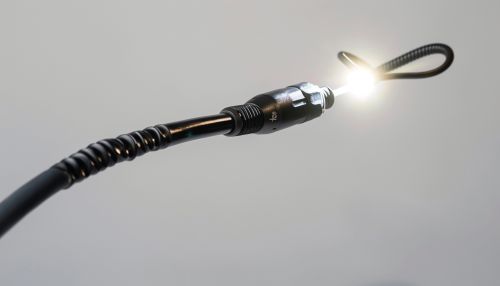Upper Endoscopy
Introduction
An upper endoscopy, also known as an EGD, is a medical procedure that allows a doctor to view the upper part of the gastrointestinal (GI) tract. This includes the esophagus, stomach, and the first part of the small intestine, known as the duodenum. The procedure is performed using a flexible tube called an endoscope, which is equipped with a light and a camera at its tip.


Procedure
The upper endoscopy procedure is typically performed by a gastroenterologist, a doctor who specializes in diseases of the digestive system. The patient is usually given a sedative to help them relax and reduce discomfort. The endoscope is then carefully guided down the patient's throat and into the esophagus, stomach, and duodenum. The camera on the endoscope transmits images to a monitor, allowing the doctor to visually inspect these areas for any abnormalities.
Indications
Upper endoscopy is often used to investigate symptoms such as persistent upper abdominal pain, nausea, vomiting, or difficulty swallowing. It is also a valuable tool for detecting conditions such as gastroesophageal reflux disease (GERD), ulcers, and tumors. In addition, it can be used to take tissue samples for biopsy, remove polyps, or treat bleeding in the upper GI tract.
Risks and Complications
While upper endoscopy is generally considered safe, it does carry some risks. These include a small chance of complications such as bleeding, infection, or a tear in the gastrointestinal tract. Some patients may also have an adverse reaction to the sedative used during the procedure. It's important for patients to discuss these risks with their doctor before undergoing an upper endoscopy.
Preparation
Before an upper endoscopy, patients are typically instructed to fast for several hours to ensure their stomach is empty. They may also need to adjust or temporarily stop certain medications. The doctor will provide specific instructions based on the patient's individual health circumstances.
After the Procedure
Following the procedure, patients are monitored until the effects of the sedative wear off. They may experience some bloating or nausea, but these symptoms usually pass quickly. Because of the sedative, patients will need someone to drive them home and should plan to rest for the remainder of the day.
Conclusion
Upper endoscopy is a valuable tool for diagnosing and treating a wide range of conditions affecting the upper gastrointestinal tract. By allowing doctors to visually inspect the esophagus, stomach, and duodenum, it can provide crucial information that helps guide patient care.
